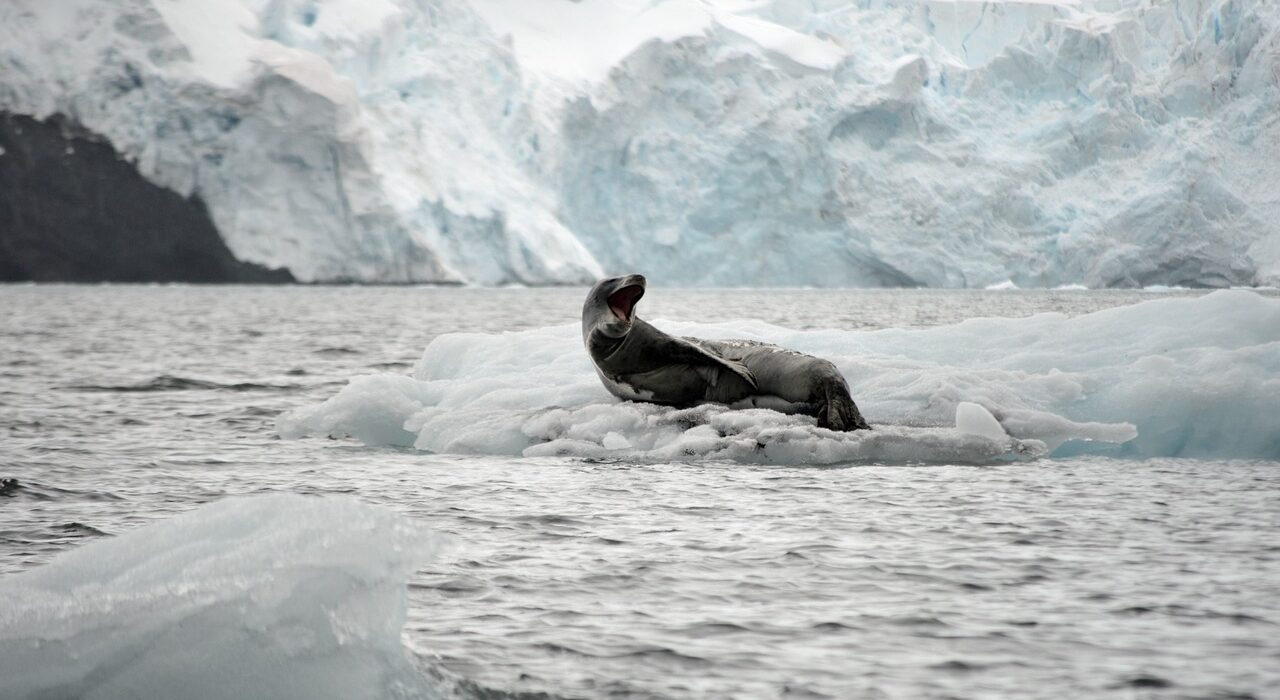What is largest desert in the world, and why?

Beyond the popular image of endless sand dunes lies a realm of unparalleled vastness and significance. The question lingers: What is the largest desert in the world, and why does it hold such prominence? The largest desert in the world is the Antarctic Desert because of it’s low precipitation levels, while covering a vast area of approximately 5.5 million square miles (14.2 million square kilometers).
From the scorching heat of the day to the chilling cold of the night, this desert epitomizes the essence of aridity. Deserts have long captivated the human imagination with their stark beauty and harsh conditions. They are often seen as barren wastelands, devoid of life and interest. However, beneath the surface lies a world of complexity and diversity that challenges our preconceived notions.
Contrary to popular belief, deserts are not just vast expanses of sand dunes. They are defined by their arid climate, characterized by low precipitation and high evaporation rates. Deserts can be found on every continent and come in various forms, from hot to cold, coastal to polar.
Exploring the Concept of Deserts
To truly understand deserts, we must delve into their defining characteristics. These regions experience extreme temperatures, with scorching heat during the day and freezing cold at night. The lack of moisture creates unique challenges for both plants and animals, leading to specialized adaptations.
Characteristics of Deserts
Deserts are defined by their arid climate, typically receiving less than 250 millimeters of rainfall per year. This results in sparse vegetation and limited water resources. The soil is often sandy or rocky, with little organic matter to support life.
Types of Deserts: Hot, Cold, Coastal, and Polar
Deserts come in a variety of forms, each with its own distinct features. Hot deserts, such as the Sahara, experience high temperatures year-round, while cold deserts, like the Gobi, have extreme temperature fluctuations. Coastal deserts, such as the Atacama, are influenced by ocean currents, while polar deserts, like Antarctica, are characterized by their icy landscapes.
Unveiling the Largest Desert in the world
Despite its reputation as a vast sea of sand, the Sahara is not the largest desert in the world. This title belongs to the Antarctic Desert, encompassing the entire continent of Antarctica. While the Sahara may be the largest hot desert, it is surpassed in size by its cold counterpart.
Geographic Boundaries: From Africa to the World
The Sahara spans across North Africa, covering an area of over 9 million square kilometers. Its borders touch several countries, including Morocco, Algeria, Tunisia, Libya, Egypt, Mauritania, Mali, Niger, Chad, and Sudan. Despite its size, the Sahara is just one piece of the global desert puzzle.
The Surprising Truth: It’s Not All Sand
While sand dunes are a defining feature of the Sahara, they only make up a small portion of its vast expanse. The desert is also home to rocky plateaus, gravel plains, and salt flats. Oases dot the landscape, providing essential water sources for both humans and wildlife.
Discovering the Sahara: The Jewel of Africa
The Sahara is often referred to as the “Jewel of Africa,” thanks to its stunning natural beauty and rich cultural heritage. Despite its harsh conditions, the desert is teeming with life, from nomadic tribes to rare desert-adapted species.
Geographic Extent and Location
Stretching from the Atlantic Ocean to the Red Sea, the Sahara is the largest hot desert in the world. It covers an area of approximately 9.2 million square kilometers, making it roughly the size of the United States.
Climate: Beyond the Stereotypes
Contrary to popular belief, the Sahara is not always scorching hot. While temperatures can soar during the day, they can plummet at night, especially in the winter months. The desert also experiences sporadic rainfall, which can trigger flash floods in certain areas.
Unique Features: Oases, Ergs, and Hamadas
Despite its arid climate, the Sahara is home to a surprising variety of landscapes. Oases provide vital water sources for both humans and wildlife, while ergs (sand dunes) and hamadas (rocky plateaus) dominate the terrain.
Tracing Ancient Cultures: From Pharaohs to Berbers
The Sahara has a rich history dating back thousands of years. Ancient civilizations, such as the Egyptians and Berbers, thrived along its fertile river valleys and trade routes. The desert is scattered with archaeological sites, revealing glimpses of its storied past.
Trade Routes and Trans-Saharan Caravans
The Sahara served as a crucial crossroads for trade between Africa, Europe, and the Middle East. Caravans traversed its vast expanse, carrying goods such as gold, salt, and slaves. These trade routes facilitated cultural exchange and economic development.
Desertification: The Battle Against Encroaching Sands
Climate change and human activities have exacerbated desertification in the Sahara, leading to the expansion of sand dunes and loss of fertile land. Efforts to combat desertification include reforestation, sustainable land management, and water conservation measures.
Nomadic Life: Adapting to a Harsh Environment
Nomadic tribes, such as the Tuareg and Bedouin, have inhabited the Sahara for centuries, relying on their traditional knowledge and survival skills to thrive in the desert. However, modernization and environmental degradation threaten their way of life, forcing them to adapt to new challenges.
Comparing the Sahara to Other Deserts
While the Sahara is the largest hot desert in the world, it is surpassed in size by the Antarctic Desert, which covers the entire continent of Antarctica. However, in terms of geographic extent and cultural significance, the Sahara remains unparalleled.
Examining Size and Scope: The Top Contenders
The Sahara is just one of many deserts around the world, each with its own unique characteristics and challenges. From the Arabian Desert to the Great Victoria Desert, these arid landscapes play a crucial role in shaping our planet’s ecosystems.
The Tug-of-War Between Size and Extremes
While the Antarctic Desert may be the largest in terms of area, the Sahara is unrivaled in terms of extreme temperatures and harsh conditions. Its vast expanse and diverse ecosystems make it a microcosm of the desert world.
Climate Contrasts: Hot vs. Cold Deserts
Hot deserts, such as the Sahara, experience high temperatures year-round, while cold deserts, like the Gobi, have extreme temperature fluctuations. Despite these differences, both types of deserts share common features, such as low precipitation and sparse vegetation.
Exploring the Dynamics of Arid Climates
Deserts are shaped by a complex interplay of factors, including climate, geology, and human activities. Understanding these dynamics is essential for mitigating the impacts of desertification and preserving fragile ecosystems.
Sahara vs. Antarctica: A Tale of Two Extremes
The Sahara and Antarctica represent two extremes of the desert spectrum, yet they share surprising similarities. Both are vast, inhospitable landscapes that challenge our understanding of life on Earth.
Biodiversity Hotspots: Life in Arid Regions
Contrary to popular belief, deserts are not devoid of life. They are home to a diverse array of plants and animals, many of which have evolved unique adaptations to survive in extreme conditions.
Adapting to Adversity: Flora and Fauna in the Sahara
From hardy succulents to elusive desert foxes, the Sahara is teeming with life. Plants and animals have developed ingenious strategies for coping with limited water resources and extreme temperatures.
Surprising Diversity: Finding Life in Unexpected Places
Despite its harsh conditions, the Sahara harbors unexpected pockets of biodiversity. From lush oases to underground aquifers, these hidden ecosystems provide vital refuges for desert wildlife.
The Ecological Importance of Deserts
Rethinking Stereotypes: Deserts as Vital Ecosystems
Deserts are often viewed as wastelands, but they play a crucial role in supporting global biodiversity and regulating the Earth’s climate. From sequestering carbon to providing habitat for endangered species, deserts offer a wealth of ecosystem services.
Ecosystem Services: Water, Climate, and Soil
Deserts play a vital role in the global water cycle, serving as reservoirs for groundwater and regulating regional climate patterns. They also act as carbon sinks, storing vast amounts of carbon in their soils and vegetation.
Biodiversity Hotspots: The Hidden Riches of Arid Lands
Deserts are home to some of the world’s most unique and threatened ecosystems, from coral reefs in coastal deserts to ancient groves of trees in hot deserts. Protecting these biodiversity hotspots is essential for preserving Earth’s natural heritage.
Conservation Efforts: Protecting Fragile Environments
Despite their ecological importance, deserts are under increasing pressure from human activities such as urbanization, agriculture, and resource extraction. Conservation efforts aim to protect fragile desert ecosystems and promote sustainable development.
Sustainable Development: Balancing Needs and Preservation
Finding a balance between human needs and environmental protection is essential for the long-term sustainability of desert ecosystems. Sustainable development initiatives focus on improving livelihoods while conserving natural resources.
Restoring Balance: Reversing Desertification and Habitat Loss
Restoring degraded desert landscapes is a complex but essential task. Techniques such as reforestation, soil conservation, and water management can help reverse desertification and restore biodiversity.
The Role of Deserts in Human History and Culture
Desert Nomads: The Romance of a Nomadic Lifestyle
Nomadic tribes have inhabited deserts for thousands of years, relying on their traditional knowledge and adaptive skills to survive in harsh environments. Despite modernization, many nomadic cultures continue to maintain their traditional way of life.
Bedouins, Tuaregs, and Other Desert Cultures
Desert cultures, such as the Bedouin of the Arabian Peninsula and the Tuareg of the Sahara, have a rich cultural heritage that spans centuries. Their traditions, customs, and folklore offer insights into the human experience of living in extreme environments.
Survival Strategies: Traditional Knowledge and Wisdom
Desert dwellers have developed ingenious survival strategies over generations, from building resilient shelters to finding water in the most unlikely places. Their traditional knowledge and wisdom are invaluable resources for understanding and conserving desert ecosystems.
Art and Literature: Deserts as Muse and Metaphor
Deserts have inspired artists, writers, and poets for centuries, serving as symbols of both beauty and desolation. From ancient cave paintings to modern literature, the desert has captivated the human imagination with its timeless allure.
Desert Aesthetics: Beauty in Barrenness
Despite their harsh conditions, deserts possess a raw and rugged beauty that is unmatched by any other landscape. The play of light and shadow, the vast expanse of dunes and plains, evoke a sense of awe and wonder in those who venture into the desert.
Symbolism and Mythology: From Desolation to Renewal
Deserts hold a special place in the collective consciousness of humanity, symbolizing both the harsh realities of life and the promise of renewal and rebirth. From biblical narratives to indigenous creation myths, the desert is imbued with spiritual significance.
Conclusion
The Sahara is more than just a vast expanse of sand; it is a microcosm of the desert world, teeming with life and rich in cultural heritage. As we continue to explore and understand this remarkable landscape, we gain a deeper appreciation for the interconnectedness of all living things.
Deserts may seem inhospitable, but they are resilient ecosystems that have endured for millions of years. By studying and protecting these fragile environments, we can learn valuable lessons about adaptation, resilience, and the power of nature.
As the world grapples with climate change and environmental degradation, the importance of deserts has never been greater. By investing in conservation efforts and sustainable development initiatives, we can ensure that these unique and valuable ecosystems continue to thrive for generations to come.









